How Different MOOC Providers are Responding to the Pandemic (Updated)
MOOC providers have responded to the pandemic by providing catalog access for campus students, launching new courses, and offering free certificates.
The ongoing pandemic has increased interest in online education — especially MOOC providers have all seen drastic growth (including a few celebrities), reminding me of the Year of the MOOC.
| April 30th Rank¹ |
Sessions (in millions)² | |
| Coursera | #287 (+157) | 45 (↑67%) |
| edX | #663 (+510) | 19.2 (↑52%) |
| FutureLearn | #3,009 (+3189) | 6.15 (↑116%) |
| Class Central | #4,693 (+12,488) | 4.4 (↑406%) |
| Federica | #285,183 (+495,214) | 0.18 (↑200%) |
| MiriadaX | #45,692 (+33,412) | 0.73 (↑52%) |
| Swayam | #10,556 (+959) | 3.2 (↓27%) |
1. Based on Alexa Ranking. Numbers in parentheses point to the change in ranking since March 14th.
2. Number of sessions in March and percent change from February. Based on SimilarWeb data.
But when universities started moving their classes online (or rather “remote”), western MOOC providers weren’t part of the conversation.
In China, the biggest MOOC providers also provide tools and services for on-campus students. This allowed them to grow rapidly when the spring semester went online in mid February. You can find more details below as well as in this in-depth interview with new CEO of XuetangX.
By contrast, for MOOC providers like Coursera, edX, and FutureLearn, growth didn’t come from campuses going online, but from social distancing policies coming into effect worldwide.
Class Central first noticed this surge on March 15th. By the end of April, 9 million learners had visited Class Central, compared to just 500 thousand by the end of February. Coursera received over 10 million course enrollments in a 30-day period, up 644% from last year. And edX became one of the world’s top 1000 websites.
In the last 30 days, Class Central received more traffic than we did in 2019. These users were also more engaged.
One number in particular stands out to me – clicks to the provider (Go To Class button clicks on our course pages). They increased significantly, 4.4m vs 2.5m. pic.twitter.com/UGvcaBcEFj
— Dhawal Shah @dhawal@mstdn.social (@dhawalhshah) April 20, 2020
MOOC providers have been reacting to the pandemic in three different ways:
- Providing catalog access for campus students
- Launching free courses about COVID-19
- Offering free certificates for certain courses
My colleague Rui has been maintaining a comprehensive list of courses that teach about COVID-19. The list has grown to almost 30 courses from organizations including Stanford, Harvard, Johns Hopkins, and the World Health Organization (WHO). Some have received hundreds of thousands of enrollments.
Below, we break down how different providers have been reacting to the pandemic. We will update the article as new information becomes available.
Coursera
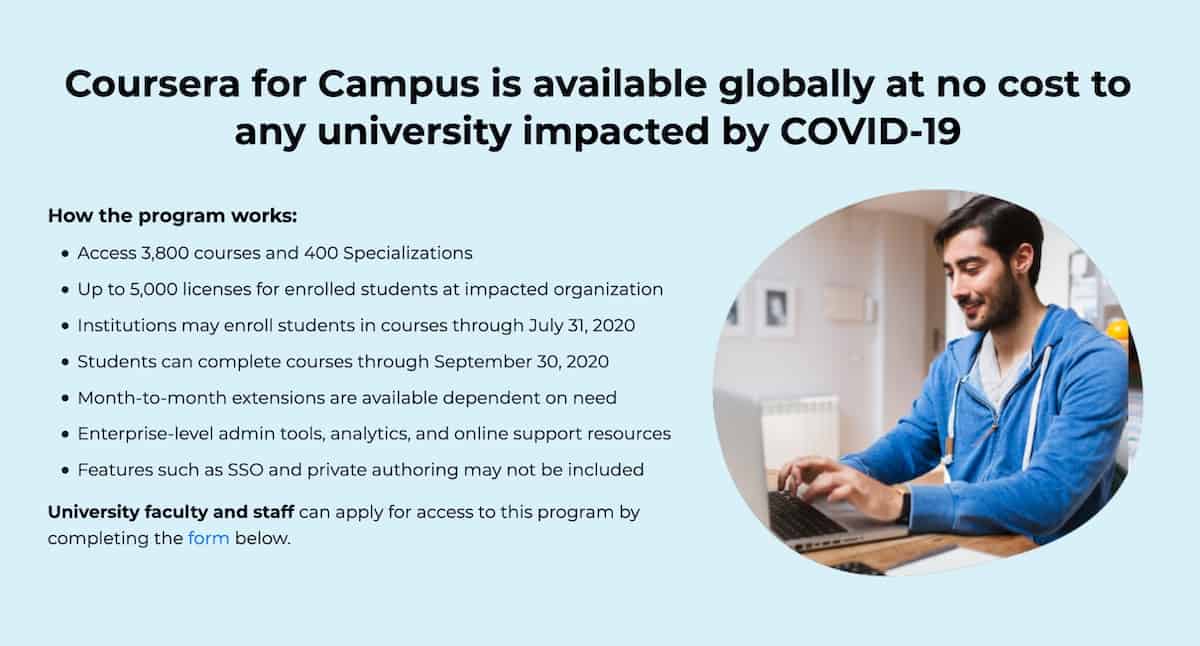
On March 12th, Coursera announced that they will give free catalog access to all higher-ed institutions impacted by the pandemic via Coursera for Campus.
Universities can sign up to Coursera’s catalog of 3800 courses and 400 specializations for up to 5000 of their students. The access will last till the end of July, after which Coursera might consider monthly extensions.
In addition, Coursera launched CourseMatch, a service that maps on-campus courses with equivalent Coursera courses. The CourseMatch page shows the mappings for different universities. Universities can have their catalogs mapped by sending a CSV of their courses to coursematch@coursera.org.
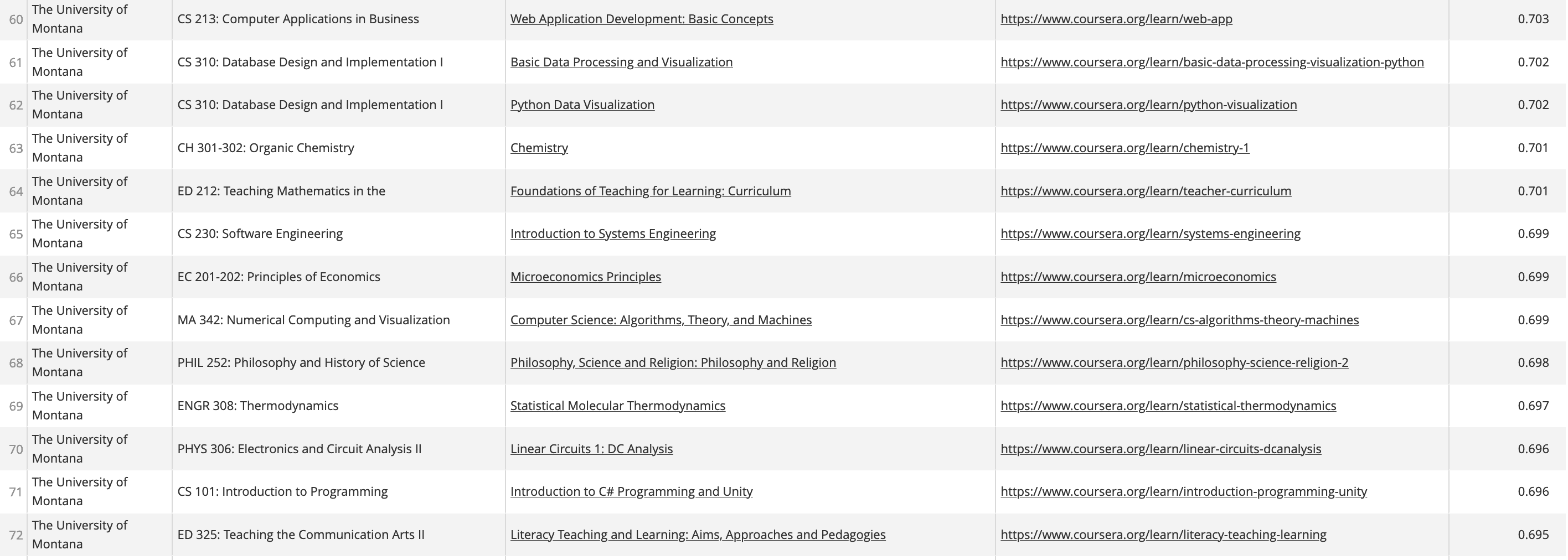
Coursera is also planning to launch Live2Coursera later this year, which allows integration of live lectures into private classes.
During the recent Coursera Partners Conference, Coursera’s CEO Jeff Maggioncalda shared some numbers about the response to the initiative: 6,600 unique institutions, 415 thousand students, and 955 thousand enrollments.
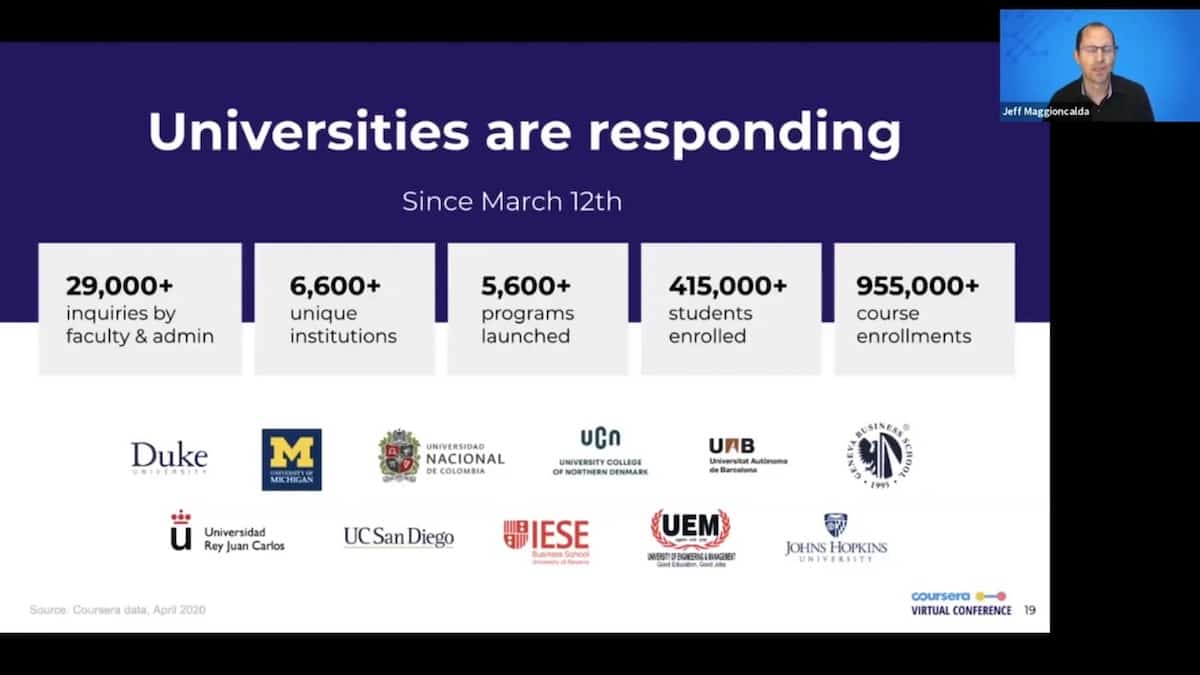
On April 24th, Coursera extended a similar offer to governments, this time via its Coursera Workforce Government Recovery initiative. It would allow governments to give unemployed workers access to Coursera’s catalog. Each government will receive up to 50,000 licenses.
According to Coursera, the US states of Illinois, Arizona, and Oklahoma, as well as the governments of Colombia, Costa Rica, Greece, Malaysia, Panama, Ukraine, and Uzbekistan will be the first to leverage the initiative.
For the general public, Coursera also offered free certificates for certain courses. Initially these were available till May 31st, but the offer has been extended till the end of July. We’ve written about this offer on Class Central, and it’s been very popular: by the end of April, the article had 1.5 million views.
On June 1st, Coursera announced free catalog access for all university students. Simply put, it’s Coursera for Campus, except universities don’t need to apply to join the program. The caveat is that you need an email address provided by your university, and your university’s domain should be part of Coursera’s database.
I tried using my Georgia Tech email, but the offer isn’t available. This may be because Georgia Tech already received 5000 Coursera licenses for its students. Although, it’s not clear why that would preclude them from leveraging the new, expanded offer.
In September 2020, Coursera published a report summarizing the impact of their response to the pandemic.
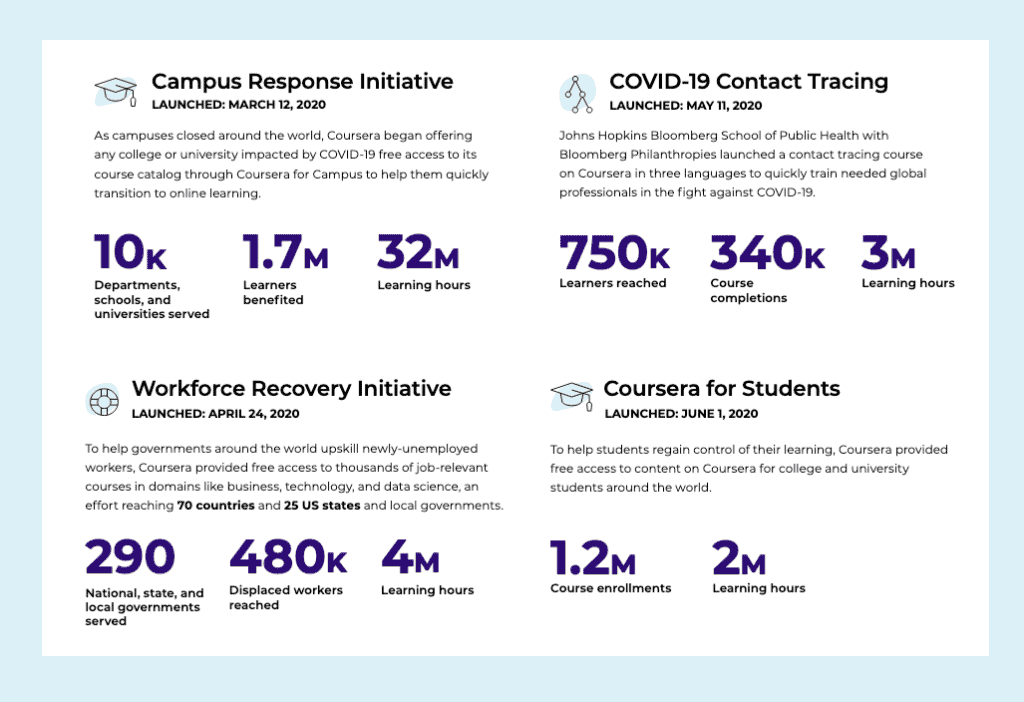
edX
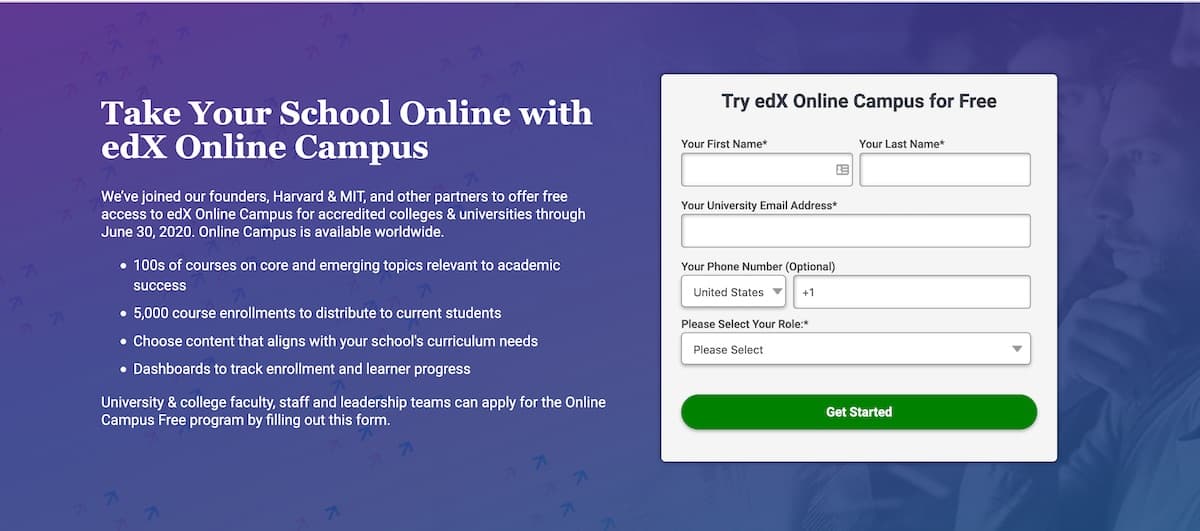
On March 11th, edX launched its Remote Access Program which allowed its university partners to provide their students with free access to edX’s catalog. 60 partners ended up taking the offer.
Perhaps taking a cue from Coursera, in mid April, edX expanded the program to all universities. The edX Online Campus, as it’s called, is limited to 5000 course enrollments per university through June 30, 2020. A limited selection of edX’s catalog is available through the program.
In the first week of April, edX and Harvard launched a free course on ventilators. By the end of April, it had 180k enrollments.
FutureLearn
On March 9th, FutureLearn Campus was announced. It was originally supposed to launch in late 2020, but the company fast tracked it and offered it for free to its partners.
Though named similarly, it’s different from what Coursera and edX offer. FutureLearn Campus allows universities to offer their own courses to their students by hosting on FutureLearn for free. It also allows to teach Small Private Online Courses (SPOCs) using the platform.
On May 4th, the company announced that FutureLearn Campus will give all its partners a way to “give their current students and staff free upgraded access to short courses across the platform until at least the end of September 2020″.
The company also announced a number of Coronavirus courses. The most popular has 140k students.
Here are few other ways the company is helping:
- Study with Australia Online provides students worldwide with free digital upgrades to 27 courses from Australian universities. The offer ends on June 30.
- FutureLearn Schools give students aged 13-18 free access to online courses in collaboration with Tes and Pearson. The offer will be available from May to September 2020 to every eligible UK and Ireland student.
- The Skills Toolkit, developed in partnership with the UK government, includes free digital upgrades to five courses.
A comprehensive list of FutureLearn courses with free digital upgrades can be found here.
Chinese MOOC Providers
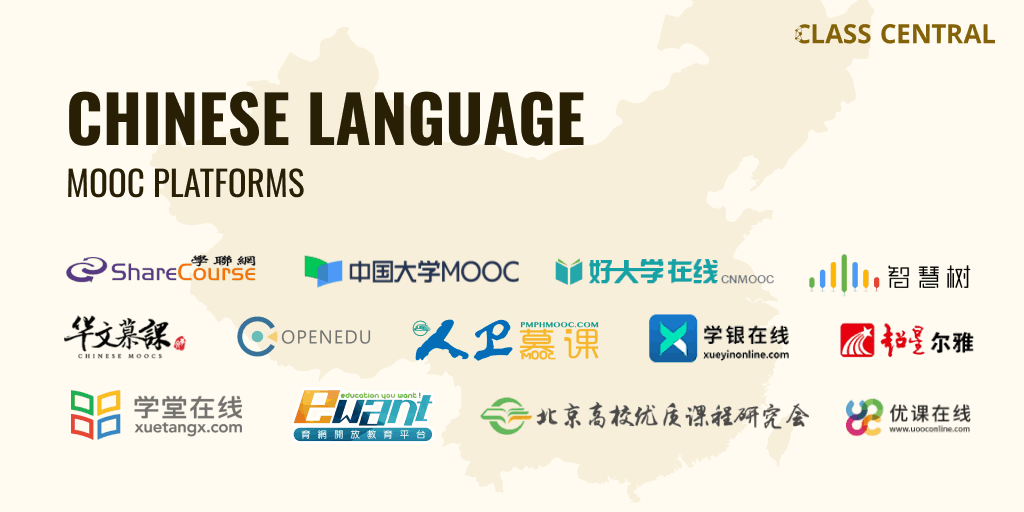
To deal with the challenges of coronavirus, China turned to MOOCs and other forms of online education. On February 7, 2020, the Ministry of Education (MOE) issued instructions on the higher-ed transition to online teaching, enabling students to resume their studies remotely by providing 24,000 online courses from more than 20 online platforms free of charge.
Many universities in China, including Peking University and Tsinghua University, have shared instructions to prepare for the transition to online study on February 17, 2020. In the spring semester, 3923 courses at Tsinghua University and 4437 courses at Peking University will be taught online via MOOCs, SPOCs, class recordings, live streaming courses and video conferences.
xuetangX
On January 30th, xuetangX announced they would provide free MOOCs to the public, 1600+ free credit-eligible courses for universities, and free membership of Rain Classroom for teachers. They also offer free live training on how to teach online through Rain Classroom every day in February. The users of Rain Classroom increased by 16 million between February 17th and March 19.
iCourse
On Feb 1st, iCourse announced free MOOCs for the public, 3900+ free credit-eligible courses for universities, and free SPOC tools and services for teachers. The initiative has been leveraged by 1300+ universities, 500K teachers, and 9M students from February to April.
Chaoxing Erya
Chaoxing provides 480 free courses from Erya, 3400+ credit-eligible MOOCs from Xueyin Online, and the free SPOC tool Xuexitong.
On Mar 2, over 17M students and 650K teachers had used Xuexitong.
Other Providers
- France’s FUN platform is re-opening its archived MOOCs.
- ThaiMOOC received 200k new registrations. Before the pandemic, they had 250k users. The platform launched in 2016.
- The Italian MOOC platform Federica.eu is supporting 100 Federico II professors who are leveraging MOOCs from Federica and using Microsoft Teams to hold lessons. You can find more details here.
- OpenSAP which usually sees 500 new learners is now seeing 1000 learners a day. In March, they had 17k new learners and 80k enrollments. In April, the number rose to 25k learners and 105k enrollments. They also extended deadlines for all of their courses from 2019/2020 so that learners can earn their certificates for free in self-paced courses up until June 30.

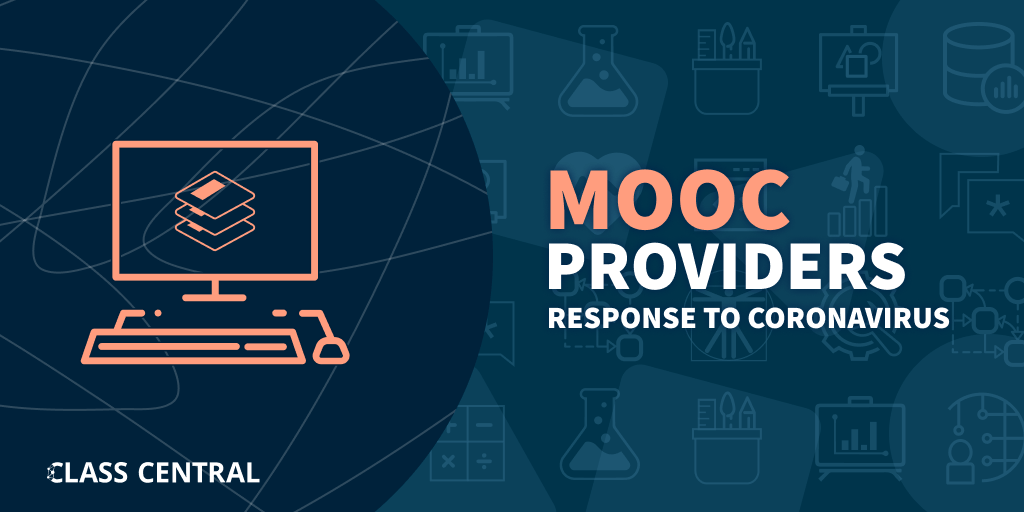






Eric Hrahsel
I wish these big MOOC providers do more for us. I thank coursera. It is the best.
Eric Hrahsel
Its sad to see SWAYAM not doing really good in these times. I think the problem is the make of the website. Its hard to navigate. I wish, they will change and tweak things in the future.
ankit
I totally agree with you. Its very complex to search a particular course and there is no active learning course structure.
Suparn Patra
Most of the Swayam courses (especially NPTEL ones) are session-based. That is they are offered at max. twice a year.
Except for some, there is a fixed start and end date. But there are courses which are self-paced and doen’t have hard start dates.
You may see Swayam courses at https://www.classcentral.com/provider/swayam
Soon we will be updating the following article with courses whose enrolment is open: https://www.classcentral.com/report/swayam-moocs-course-list/
Eileen Kennedy
You haven’t included Edraak here – the Arabic MOOC platform. A rapidly created totally free MOOC devised for teachers moving online in the MENA region has just been launched by UCL Relief Centre and Lebanese University https://www.edraak.org/en/course/course-v1:UCL_LU+TO101+T2_2020/
Dr. Purvi Pujari
Hi, Can you please give me details if any of the companies are recruiting through MOOCs? I am really interested in the information. Thanks
Jim
Dhawal, I’m wondering if annual subscriptions have become more popular during the (seemingly endless) pandemic lock-down. At least to me, they seem to be offered by more providers. But I’m also discovering more providers than I was previously aware, including a couple that aren’t listed on your site. Happy holidays!